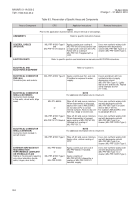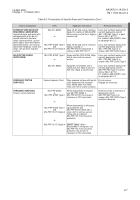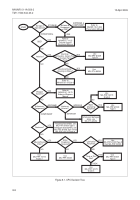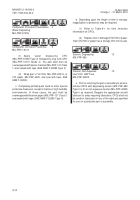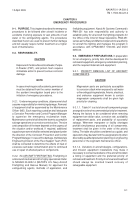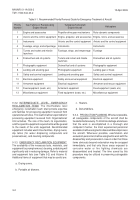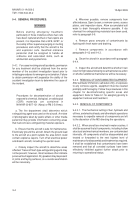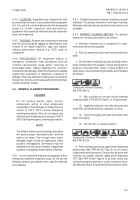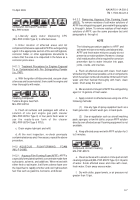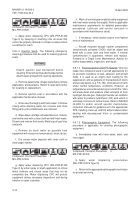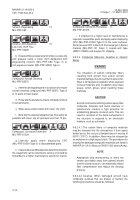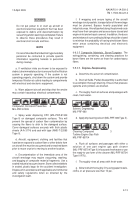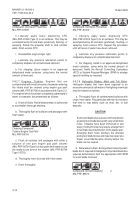TM-1-1500-344-23-2 - Page 159 of 240
9-5
NAVAIR 01-1A-509-2
TM 1-1500-344-23-2
15 April 2009
9-4.4. CLEANING. Equipment and components shall
be cleaned by the team, in accordance with paragraphs
9-5, 9-6, and 9-8, and then delivered to the designated
shops for further inspection and maintenance.
Equipment that cannot be removed shall be cleaned in
place and inspected.
9-4.5. TAGGING. All parts and components removed
from the aircraft shall be tagged for identification (see
Volume IV for Water/Crash/Fire Tags and Labels).
Indicate preservation method (e.g. CPC) used on
component.
9-4.6. PROCESSING. All equipment subject to
emergency reclamation team procedures must be
certified operationally ready before returning to
serviceable status. Inspect equipment for corrosion,
cracks and heat damage. Obtain the maximum available
engineering assistance to determine evaluation of
damage. Particular attention shall be given to dissimilar
metal joints. Avionic electrical equipment will most likely
contain dissimilar metals.
9-5. GENERAL CLEANING PROCEDURES.
CAUTION
Do not expose plastic items, avionic
components, wiring, or other components
susceptible to heat damage to temperatures in
excess of 130
°
F (54
°
C) during emergency
cleaning procedures. Also, do not expose any
other areas to temperatures in excess of 150
°
F
(66
°
C) during emergency cleaning procedures.
NOTE
The mildest chemical and cleaning cycle which
will assure proper decontamination shall be
used at all times. Even though fresh water/
detergent wash should not significantly affect
accident investigations, permission must be
obtained from the senior member of appointed
accident investigation board before cleaning.
9-5.1. Use the specified methods in paragraph 9-8 for
emergency treatment of specific areas. Do not use the
following general procedures when specific methods
are available.
9-5.2. Contaminated areas may be cleaned by several
methods. The primary method is fresh water flushing.
Alternate methods may be used when fresh water is not
available.
9-5.3. PRIMARY CLEANING METHOD. The primary
method of removing salt water is as follows:
a. Immerse removed unit or component in clean,
fresh water whenever possible.
b. Flush all areas with clean fresh water and allow to
drain.
c. Dry the item or areas by vacuum cleaning excess
water, blotting with cloth or paper, or blow-drying with air
pressure not greater than 10 psi. If visual evidence of
salt remains, a second cleaning should be accomplished
as follows:
Compound, Aircraft Cleaning
2
MIL-PRF-85570
(1)
Mix a solution of one part aircraft cleaning
compound (MIL-PRF-85570 Type II) in 14 parts water.
(2)
Apply the solution to the affected areas and
scrub with soft bristle brushes, sponges or cloths.
(3)
Flush thoroughly with clean fresh water and
drain thoroughly.
(4)
Dry the item or areas as before.
Compound, Corrosion Preventive
4
MIL-PRF-81309
d. After flushing and drying, apply water displacing
preservative (MIL-PRF-81309 Type III) on all avionic
components and connectors. Ensure that all areas and
crevices are coated. Liberally apply water displacing
CPC (MIL-PRF-81309 Type II) to all other areas that
cannot be properly drained or contain recesses which
are difficult to reach. Ensure that all surfaces are coated.
Back to Top


